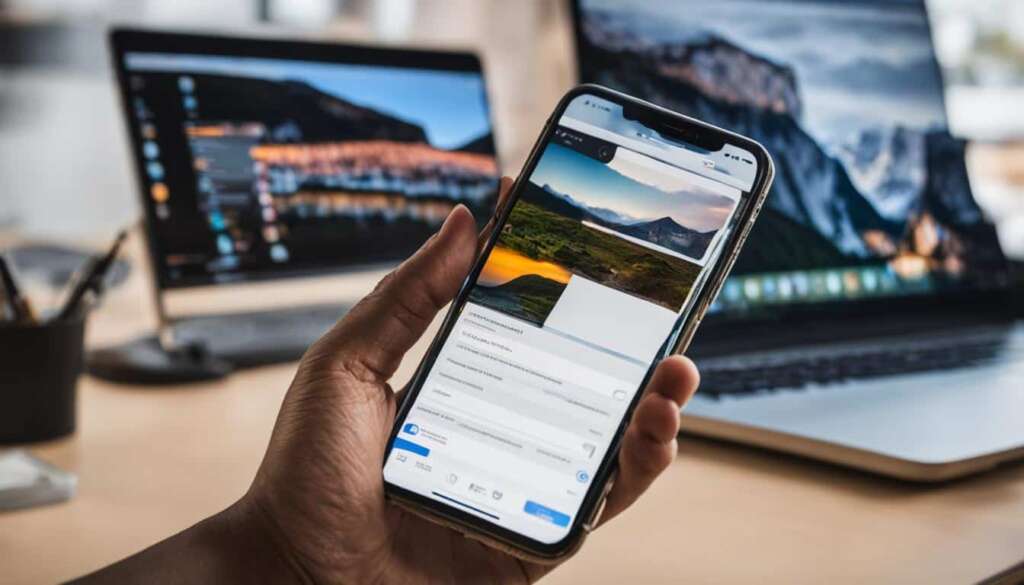Table of Contents
When it comes to locating your iPhone backup on a PC, it’s essential to know where to find it for easy access and management. Whether you need to find, view, or change your iPhone backup on a PC, this guide will provide you with step-by-step instructions.
For Windows PC users, iPhone backups are typically stored in the following location: \Users\(username)\AppData\Roaming\Apple Computer\MobileSync\Backup\. It’s important to note that the exact location may vary depending on the version of Windows you’re using. To manually locate your backups, you can use File Explorer and navigate to the Backup folder. Another option is to utilize third-party software like iBackup Extractor for a user-friendly browsing experience.
Mac users, on the other hand, can find their iPhone backups in the following location: ~/Library/Application Support/MobileSync/Backup/. Simply open Finder or iTunes and click on your device to access a list of your backups. Remember that backup files are not human-readable and cannot be modified directly. However, if you need to view and access the data within your backups, third-party software like iBackup Extractor can assist you.
Once you have located your iPhone backups on your PC, it’s important to manage them effectively. You can make copies of your backups or delete backups that are no longer needed. To copy backups to another location, simply find the Backup folder and copy the entire folder to an external drive or network-storage location. Avoid editing, renaming, or extracting content from your backup files, as this can potentially damage the files. If you use iCloud Backup, you can also manage your backups on your iOS or iPadOS device, Mac, or PC.
Now that you have a clear understanding of how to locate and manage your iPhone backups on a PC, you can ensure the safety and accessibility of your valuable data.
iPhone Backup Location on Windows PC
When it comes to finding your iPhone backup on a Windows PC, it’s important to know the exact location where it is stored. By knowing the backup location, you can easily access and manage your iPhone backups. In this section, we will guide you on how to locate your iPhone backup on a Windows PC.
The default location for iPhone backups on Windows systems is:
\Users\(username)\AppData\Roaming\Apple Computer\MobileSync\Backup\
- Open File Explorer on your Windows PC.
- Navigate to the following path: \Users\(username)\AppData\Roaming\Apple Computer\MobileSync\.
- Inside the MobileSync folder, you will find the Backup folder. Open this folder to access your iPhone backups.
Alternatively, you can use third-party software like iBackup Extractor to easily access and browse your iPhone backups in a more user-friendly way. These tools provide a convenient interface for viewing and managing your backups.
If you need to change the iPhone backup location on a Windows PC, you have a couple of options:
- Follow the default method using File Explorer to manually move the backup folder to a different location.
- Utilize third-party tools like EaseUS MobiMover, which allow you to change the backup location with ease.
By following these steps, you can easily find and change the location of your iPhone backup on a Windows PC, giving you better control and accessibility of your important data.
iPhone Backup Location on Mac
When it comes to finding your iPhone backup on a Mac, it’s essential to know the location where these backups are stored. By knowing the backup location, you can easily access and manage your iPhone backups. On Mac systems, iPhone backups are typically stored in the following location: ~/Library/Application Support/MobileSync/Backup/.
To access this location and view your backups, you have a couple of options. Firstly, you can open Finder and navigate to the following path: ~/Library/Application Support/MobileSync/Backup/. Here, you will find a list of your iPhone backups.
Alternatively, you can utilize iTunes to access your backups. Open iTunes, connect your iPhone, and click on your device icon. In the device summary page, you’ll see a section labeled “Backups.” By clicking on the “Manage Backups” option, you can view a list of your iPhone backups and even access them within the Finder.
It’s important to note that iPhone backup files are not human-readable and cannot be modified directly. However, if you need to view and extract data from your backups, you can rely on third-party software like iBackup Extractor. This software allows you to explore the contents of your backups and extract specific data that you need.
Benefits of Using iBackup Extractor:
- View your iPhone backup files in a user-friendly interface.
- Extract specific data such as messages, photos, contacts, and more.
- Restore selected data from your backups to your iPhone.
- Save time by quickly accessing and managing your backups.
By using iBackup Extractor, you can gain a deeper understanding of the contents within your iPhone backups and extract the data you need with ease. Now that you know the location of your iPhone backups on Mac, you can confidently manage and utilize them to their fullest potential.
How to Manage iPhone Backups on PC
Once you’ve located your iPhone backups on a PC, it’s important to know how to manage them effectively. You have the option to make copies of your backups, delete backups that you no longer need, or even copy backups to another location.
To copy your backups to another location, simply find the Backup folder on your PC and copy the entire folder to an external drive or network-storage location. This ensures that you have an additional copy of your important data in case of any unforeseen circumstances.
However, it’s crucial to note that you should avoid editing, renaming, or extracting content from your backup files. Doing so can potentially corrupt the files and make them unusable. It’s always recommended to keep the backups intact to ensure their integrity and functionality.
If you’re using iCloud Backup, you also have the flexibility to manage your backups on your iOS or iPadOS device, Mac, or PC. This allows you to conveniently handle your backups and keep your data secure across multiple devices.
FAQ
Where can I find my iPhone backup on a PC?
iPhone backups on a PC are typically stored in different locations depending on the operating system you’re using. On Windows systems, the backups are usually stored in the \Users\(username)\AppData\Roaming\Apple Computer\MobileSync\Backup\ folder. On Mac systems, the backups are typically stored in the ~/Library/Application Support/MobileSync/Backup/ folder.
How can I manually locate my iPhone backups on a Windows PC?
To manually locate your iPhone backups on a Windows PC, you can use File Explorer and navigate to the Backup folder. The exact location may vary depending on the version of Windows you’re using. Alternatively, you can use third-party software like iBackup Extractor to access and browse your backups in a more user-friendly way.
Can I change the iPhone backup location on a Windows PC?
Yes, you can change the iPhone backup location on a Windows PC. You can follow the default method using File Explorer to move the Backup folder to a different location. Alternatively, you can use a third-party tool like EaseUS MobiMover to change the backup location.
How can I access my iPhone backups on a Mac?
To access your iPhone backups on a Mac, you can open Finder or iTunes and click on your device. From there, you can view a list of your backups and even access them in the Finder. However, it’s important to note that backup files are not human-readable and cannot be modified directly.
How can I manage my iPhone backups effectively on a PC?
To manage your iPhone backups on a PC, you can make copies of your backups or delete backups that you no longer need. To copy backups to another location, you can simply find the Backup folder and copy the entire folder to an external drive or network-storage location. However, you should avoid editing, renaming, or extracting content from your backup files as this can potentially ruin the files. If you use iCloud Backup, you can also manage your backups on your iOS or iPadOS device, Mac, or PC.







